Archaeological remains were discovered during dredging works in the “Five Whistles Bend” area in the Port of Gdańsk. As a result, the Maritime Institute conducted hydroacoustic scans, and a team from the National Maritime Museum verified the potential objects. During this action, remains of construction elements from the historical port were located. The project aimed to document these remains and determine their chronology to enable their future protection.
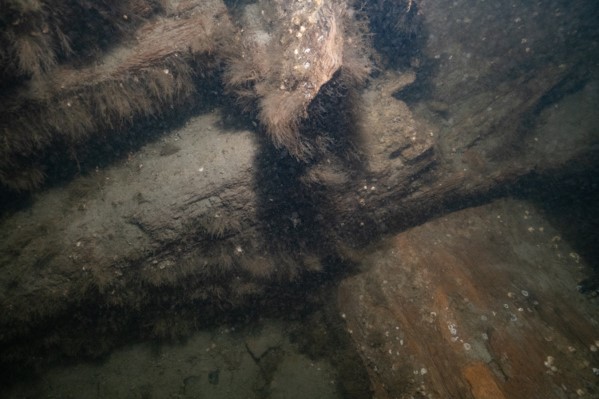
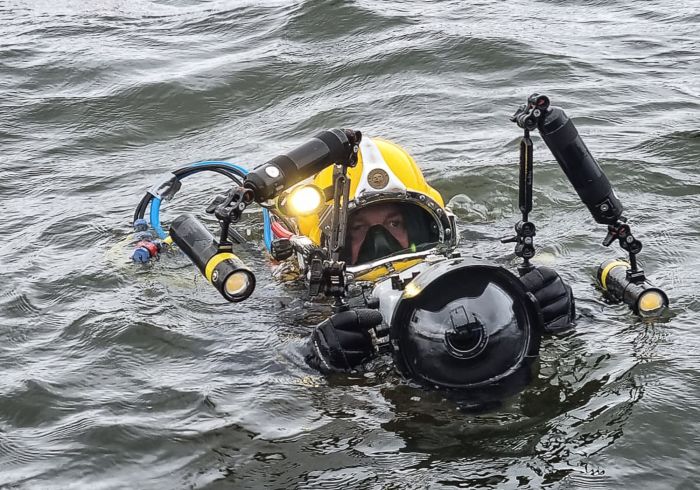 The next step was the photogrammetric documentation of the monument. This task was particularly challenging due to bad visibility and heavy ship traffic. The “Five Whistles Bend” is part of the entrance to the Port of Gdańsk, and every ship must pass through it. The structure was located almost in the middle of the waterway, which meant that the research vessel anchored there caused disruptions to ship traffic. While smaller vessels could navigate around it, the passage of larger ships required the stop of work, the ascent of the diver, and the research vessel had to leave the waterway. As a result, the photogrammetric documentation, which requires time and stable conditions, became very difficult.
The next step was the photogrammetric documentation of the monument. This task was particularly challenging due to bad visibility and heavy ship traffic. The “Five Whistles Bend” is part of the entrance to the Port of Gdańsk, and every ship must pass through it. The structure was located almost in the middle of the waterway, which meant that the research vessel anchored there caused disruptions to ship traffic. While smaller vessels could navigate around it, the passage of larger ships required the stop of work, the ascent of the diver, and the research vessel had to leave the waterway. As a result, the photogrammetric documentation, which requires time and stable conditions, became very difficult.
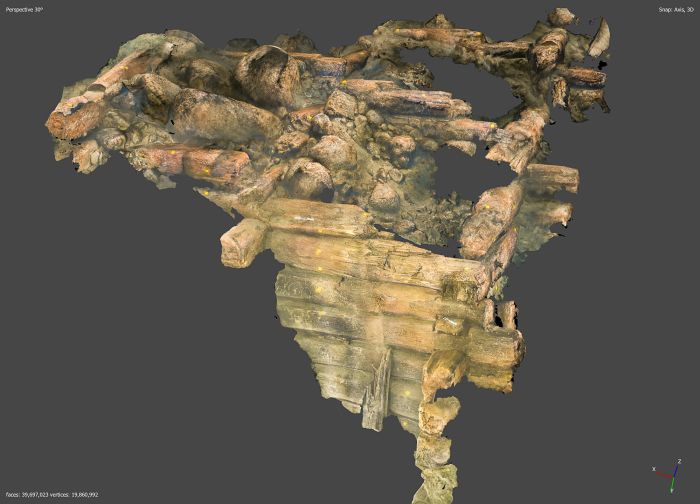 An elevation analysis of the structure was then performed, revealing that its upper part conflicted with the planned depth level of the waterway. Therefore, in the next stage, the upper beams of the structure were excavated and recovered and then handed over to the National Maritime Museum. The remaining elements were secured in situ.
An elevation analysis of the structure was then performed, revealing that its upper part conflicted with the planned depth level of the waterway. Therefore, in the next stage, the upper beams of the structure were excavated and recovered and then handed over to the National Maritime Museum. The remaining elements were secured in situ.
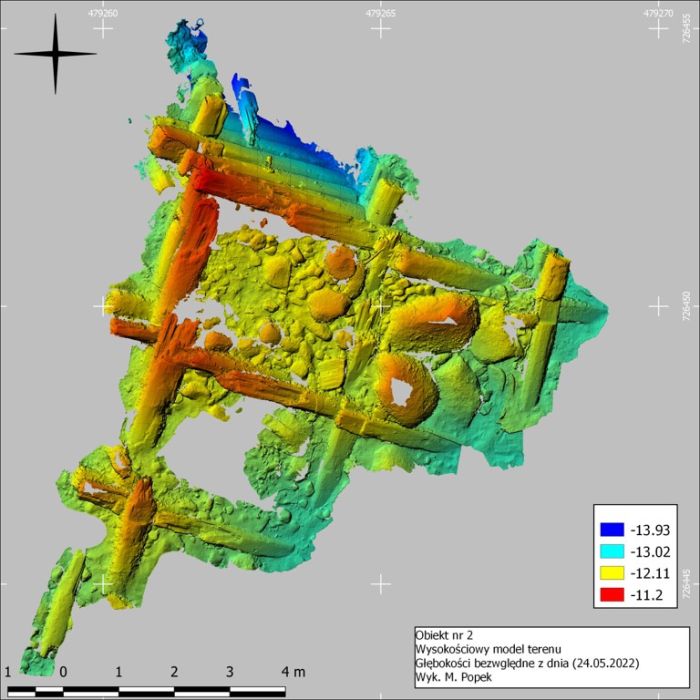
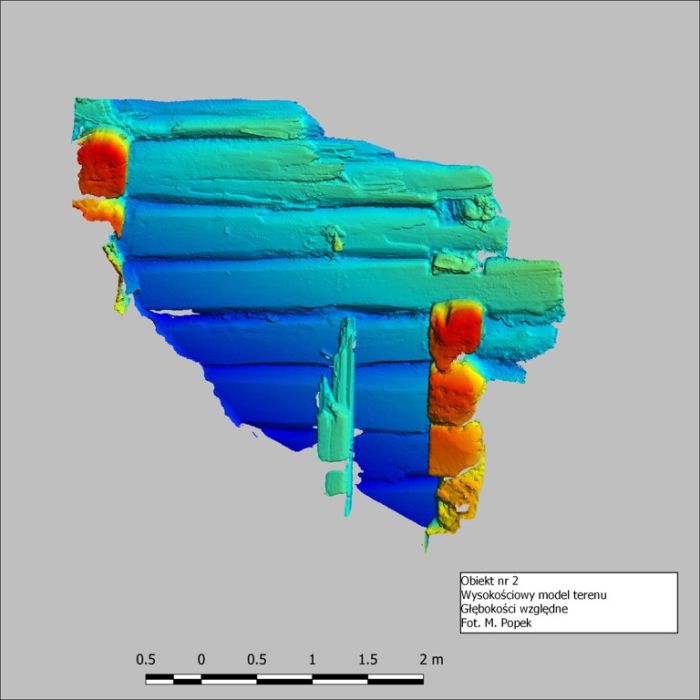
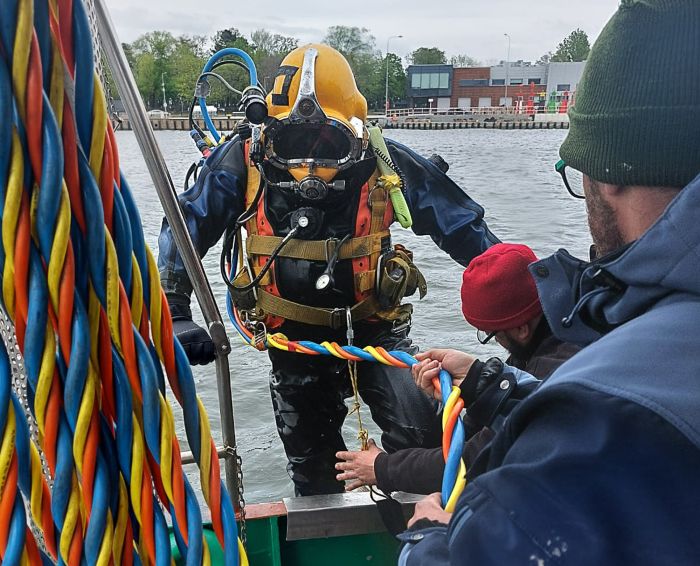
back

Project Progress
The structures that were the subject of the project were built in the form of large cross-laid beams forming a wooden “chest”. The project's first stage involved exploration of a test trench on the outer side of such a structure to determine how deep it extended into the sediment layers. The next step was the photogrammetric documentation of the monument. This task was particularly challenging due to bad visibility and heavy ship traffic. The “Five Whistles Bend” is part of the entrance to the Port of Gdańsk, and every ship must pass through it. The structure was located almost in the middle of the waterway, which meant that the research vessel anchored there caused disruptions to ship traffic. While smaller vessels could navigate around it, the passage of larger ships required the stop of work, the ascent of the diver, and the research vessel had to leave the waterway. As a result, the photogrammetric documentation, which requires time and stable conditions, became very difficult.
The next step was the photogrammetric documentation of the monument. This task was particularly challenging due to bad visibility and heavy ship traffic. The “Five Whistles Bend” is part of the entrance to the Port of Gdańsk, and every ship must pass through it. The structure was located almost in the middle of the waterway, which meant that the research vessel anchored there caused disruptions to ship traffic. While smaller vessels could navigate around it, the passage of larger ships required the stop of work, the ascent of the diver, and the research vessel had to leave the waterway. As a result, the photogrammetric documentation, which requires time and stable conditions, became very difficult.
 An elevation analysis of the structure was then performed, revealing that its upper part conflicted with the planned depth level of the waterway. Therefore, in the next stage, the upper beams of the structure were excavated and recovered and then handed over to the National Maritime Museum. The remaining elements were secured in situ.
An elevation analysis of the structure was then performed, revealing that its upper part conflicted with the planned depth level of the waterway. Therefore, in the next stage, the upper beams of the structure were excavated and recovered and then handed over to the National Maritime Museum. The remaining elements were secured in situ.

Project Outcomes
This project was an excellent example of cooperation between investors, administrative bodies, and scientific institutions to preserve underwater archaeological heritage. A compromise was reached between the needs of the port and scientists. As a result, the structures were protected. Furthermore, the research showed that these remains were parts of breakwaters dating back to the 16th and 17th centuries. The findings of this project may contribute to further research into the early modern history of Gdańsk.
Supervisor: Andrzej Pydyn
Team: Mateusz Popek, Krzysztof Kurzyk, Janusz Różycki, Paweł Litwinienko
Cooperation: Narodowe Muzeum Morskie, Frog sp. z o. o.

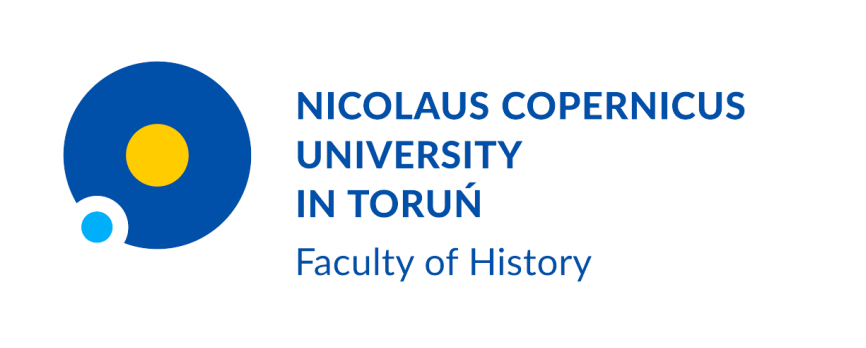
 Szosa Bydgoska 44/48, 87-100 Toruń
Szosa Bydgoska 44/48, 87-100 Toruń